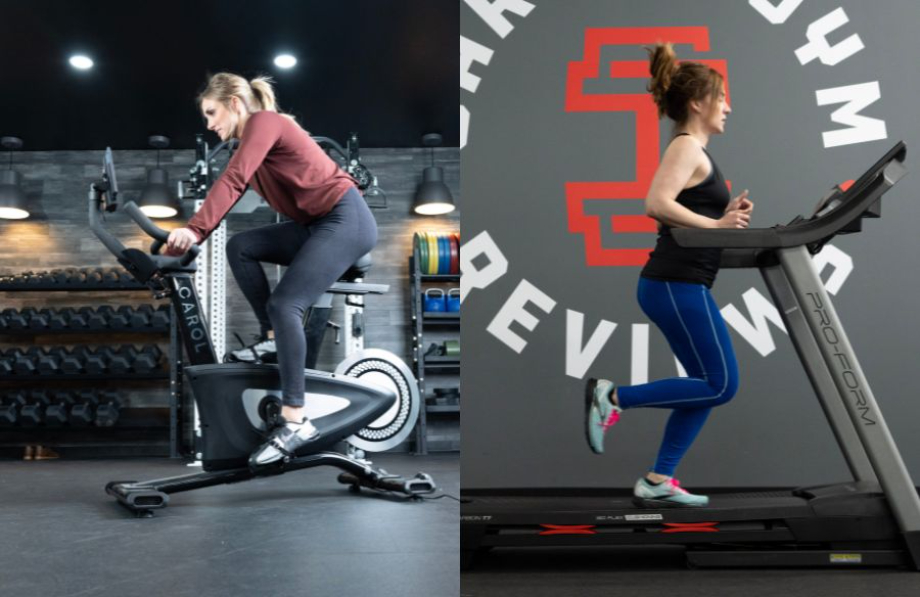We test and review fitness products based on an independent, multi-point methodology. If you use our links to purchase something, we may earn a commission. Read our disclosures.
You’re in the process of revamping your exercise routine and are on the fence about which physical activity you should add to the mix. Maybe there’s a part of you that wants to try running, but cycling seems appealing too. You already know that both forms of exercise can help with weight loss, but still, is one considered a better workout than the other?
The only way to determine which aerobic exercise is the best for you is to thoroughly compare each of them. There are clear health benefits associated with both, and they can be tweaked to fit your individual fitness level. But of course, this makes it even harder to choose! Therefore, without further adieu, let the cycling vs running battle begin so we can help you decide the best type of exercise for you.
Benefits of Cycling vs. Running
According to the Centers for Disease Control and Prevention, more than 60% of U.S. adults don’t partake in the recommended amount of physical activity. Unfortunately, as the American Heart Association points out, following a sedentary lifestyle increases your risk of cardiovascular disease, excess body weight, and even poor bone health.
Therefore, one important benefit of doing moderate-intensity exercises like cycling and running is reducing your risk of preventable health conditions. But is one better for you than the other? Let’s explore!
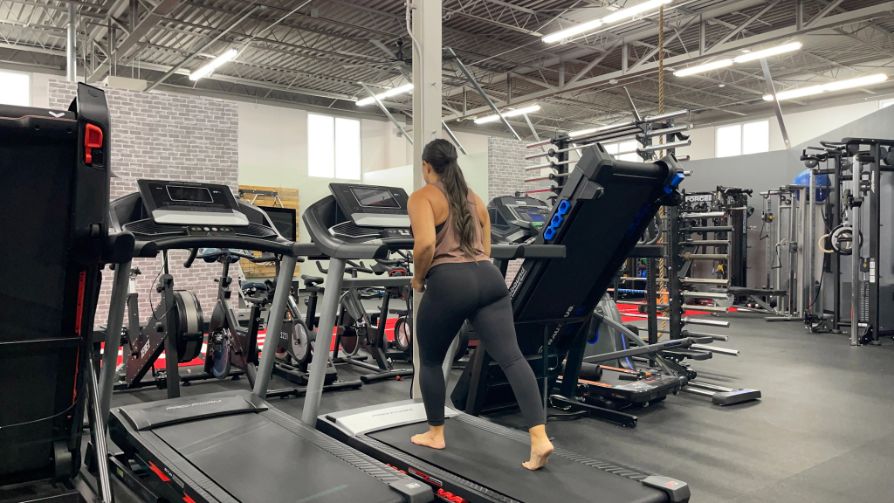
Beginner-Friendly
If you’re absolutely new to working out, you probably want to pick something that isn’t overly complicated and intimidating. Otherwise, you might make excuses each time you need to work out, which I know you don’t want to do.
The good news is you’ll find that both cycling and running are typically great for beginners. However, deciding which one is best for you depends on a few things. If you don’t want to figure out how to use any fitness equipment, then running will likely seem more beginner friendly. You just need your body and some running shoes to go for a run. Because we’re already equipped to do it, running just comes across as more natural.
Cycling, though, requires a bike, and you’d need to learn how to use that bike. The famous saying, “It’s like riding a bike,” implies that you can’t forget how to ride it once you learn. But if it’s been years since you rode on a bike, you might find it difficult to maintain your balance. If balancing isn’t an issue, then cycling should be a breeze.
Building Muscle
Those looking to build their leg muscles may choose cycling, as running doesn’t exactly lead to gains. Our muscles grow best when they work against resistance, and guess what activity on a bike causes resistance? If you guessed pedaling, you’re spot on!
The act of pedaling increases muscle mass and strength in your lower extremities due to the complex movements taking place in those muscle groups. You might notice a burning sensation in your quads during a high-intensity indoor cycling workout, but this is just the muscles reacting to resistance. While you might feel a little soreness at the time, if you’re doing it correctly, you should see gains later.
RELATED: Indoor vs Outdoor Cycling
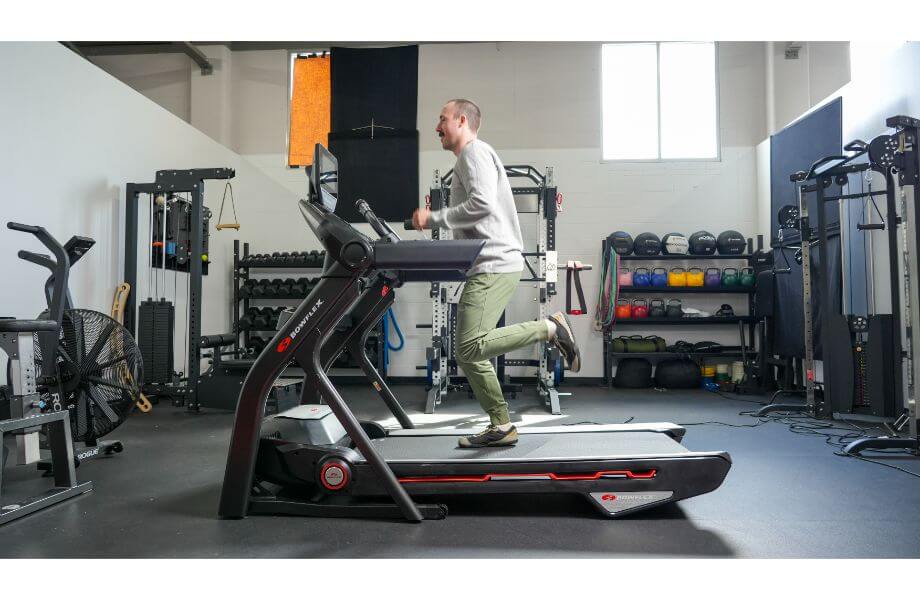
Chronic Conditions or Injuries
If you’re dealing with a chronic condition or an injury that requires you to do lower-impact exercises, cycling may be better. Cycling is considered a non-weight-bearing exercise, so it’s excellent for people dealing with knee pain or other issues.
Running, on the other hand, places a lot of impact on the joints, which could accelerate the wear and tear. However, further research from Harvard Health suggests that running builds cartilage on the knee, which could help protect against conditions like arthritis.
You can adjust the impact activity for either cardio exercise and modify it to best fit your needs. So if you’re dealing with a chronic condition or injury, don’t count either one out. For instance, although running is considered a high-impact exercise, you can adjust the incline and speed on a treadmill to something that’s comfortable for you.
Mental Health
Those struggling with stress or other mental conditions may find running to be very beneficial. One 2020 study cited that runners experience lower anxiety and depression, lower stress, and higher psychological well-being. This is because your body releases endorphins while running, which gives people a deep euphoric feeling following their workout. Cycling may also produce feelings of relaxation and calm.
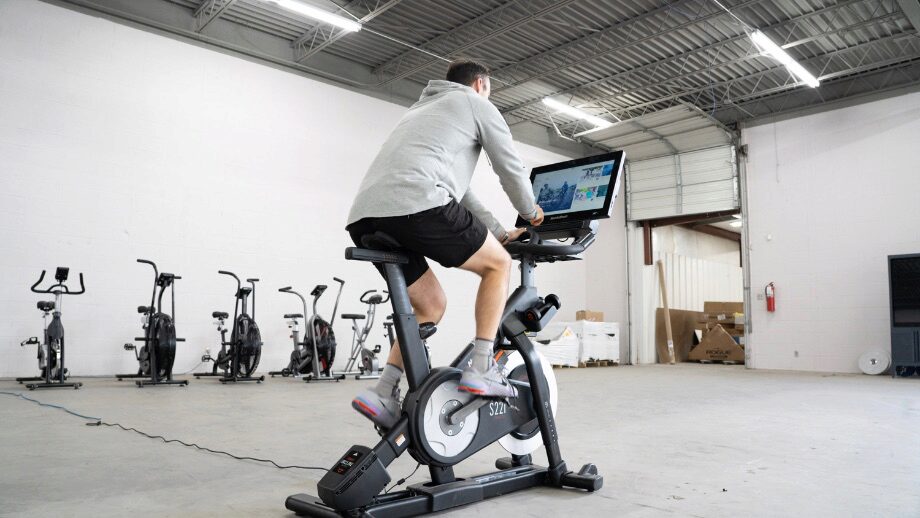
Cost
Getting your heart rate up and reaching your weight loss goals doesn’t require that you spend a ton of money. In fact, you can start running today for free, especially if you already have running shoes.
Biking, though, will likely require a more considerable investment. You’ll either have to purchase a stationary bike or get a membership at a gym to use one. If heading outside is your thing, you’ll have to buy an outdoor bike, which may get pricey.
| Benefits of Cycling | Benefits of Running |
| Builds leg muscle | More natural |
| Low-impact | Great for caloric burn |
| Beginner friendly | Improved mental health |
The Muscles Used
Running is a great cardio workout, but it also works several muscles throughout your body, too. This full-body workout primarily engages the lower body muscles like your quads, calves, hamstrings, and glutes. Your abdominal muscles also play a significant role by helping you maintain your balance.
Cycling requires you to use some of those same muscles but in a different way. The quadriceps, hamstrings, and glutes are used to produce the power you need for pedaling, which is where the resistance kicks in. You’ll use your abdominal muscles, triceps, and calves to maintain your stability.
Both exercises engage your arms to a small degree as well, especially the triceps and deltoids. However, don’t count on either one to bulk up and strengthen your arm muscles. You’d have to add in some upper body workouts to do that, which isn’t a bad idea.
Research shows that it’s actually quite beneficial for runners to strengthen their upper body muscles as it could potentially make them faster. Sometimes when running long distances, you must rely on moving your arms back and forth to give you more momentum.
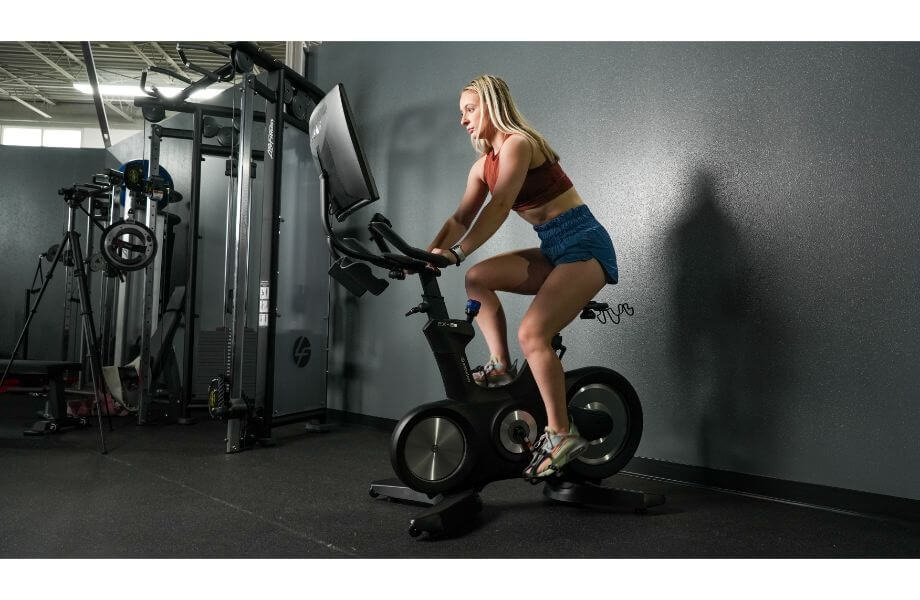
| Muscles Used Cycling | Muscles Used Running |
| Quads | Hip flexors |
| Glutes | Glutes |
| Hamstrings | Quadriceps |
| Calves | Hamstrings |
| Triceps | Calves |
| Abdominals | Abdominal muscles |
| Latissimus dorsi (The Lats) | Deltoids and triceps |
Which Is Better for Cardio Fitness?
Both running and cycling are amazing for your cardiovascular health, but one must be a clear winner, right?
Several studies have assessed how running affects one’s heart health, and the results have been promising. For example, a study published in the Journal of the American College of Cardiology found that runners in the study had a 30% lower adjusted risk of all-cause and cardiovascular mortality than non-runners. Another study was done on biking to work and found that it was linked with a reduced risk of heart disease and cancer.
When it comes to which one is the best, it ultimately depends on what you like doing more, as both are great for your heart.
Which Burns More Calories?
To achieve your weight loss goals, it helps to determine the number of calories you need to burn to lose weight. The rule of thumb has been that you need to burn 3,500 fewer calories than you consumed. Therefore, by putting yourself in a 500-calorie-per-day deficit, you should be able to lose 1 pound of fat in one week. So, which exercise could best assist you with that?
RELATED: Best Cardio Machine for Weight Loss
Running does require the use of more muscles than cycling, but that doesn’t automatically mean that you’ll burn more calories. Truthfully, they’re about neck-and-neck. Harvard Health did a deep dive into how many calories people at different weights burn doing certain activities over a 30-minute period.
According to that data, if one 125-pound person is running at 10 MPH and another 125-pound individual is cycling at 20 MPH, they’ll both burn roughly 495 calorie.
Factors such as speed, intensity, distance, weight, and fitness level all contribute to how many calories you burn. Ultimately, it’s up to you which one you choose for calorie burning as they’re quite similar.
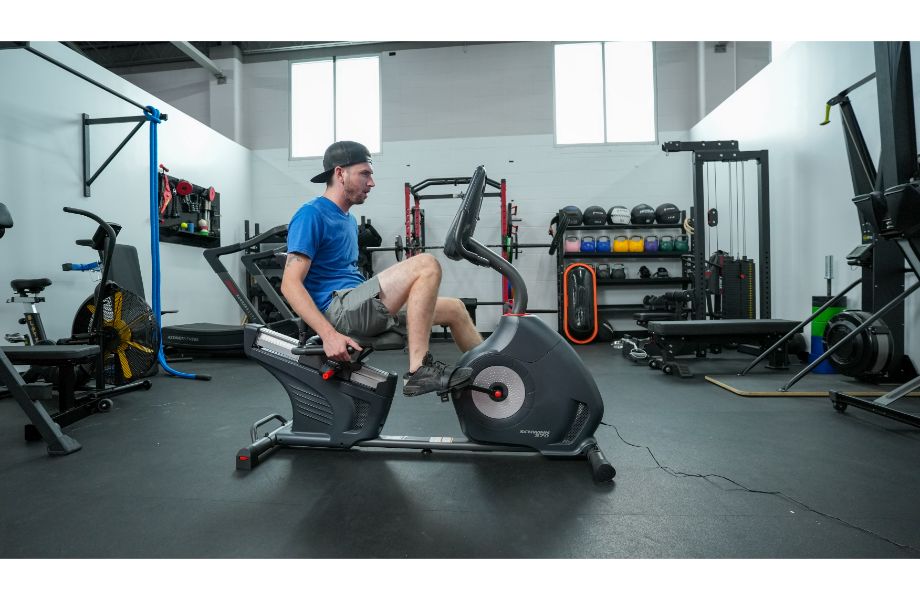
Which Burns Fat Better?
Neither workout explicitly targets belly fat, but both exercises can help you burn overall body fat. One study evaluated women who did sprint intervals and found that within six weeks, they had noticeable body fat mass reduction and a smaller waist. Another study done specifically on cycling discovered that biking at a high intensity helped women lower their body fat levels.
Overall, aerobic exercises, like cycling and running, are better at reducing belly fat than resistance training. Therefore, you can’t go wrong with doing either if you want to burn fat.
How to Choose: Cycling vs. Running
The time has come to decide rather you want to be a runner or a cyclist, so which one should you choose? Well, you could do both! However, if you only want to add one to your routine, consider these factors:
- Determine your goals: If your goal is to lose weight, both exercises will help you do that. For building larger leg muscles, go with cycling, and choose running if your goal is to run a race.
- Your fitness level: Beginners may feel more comfortable running.
- Chronic conditions/injuries: Cycling is non-weight-bearing and is better for those with certain chronic conditions and joint injuries.
- Mental health: Running releases endorphins that improve your mental well-being.
- Cost: Running is cheaper than cycling to get started.
After you assess the above, ask yourself what you enjoy. If you hate running, don’t pick it even if it’s better aligned with achieving your goals. You don’t want to choose something that you dislike and may talk yourself out of.
FAQs About Cycling vs. Running
How much cycling is equal to running?
There is general a 1:3 run-to-bike ratio, meaning that a 1-mile run is equivalent to almost 3 miles of cycling.
Is cycling better for weight loss than running?
Not necessarily. Both are forms of aerobic exercise and are great for losing weight. It’s best to pick the one that you enjoy doing the most and that aligns with your fitness level.
Which is better for belly fat: running or cycling?
Neither workout strictly targets belly fat, but they can help you lose overall body fat. One study did note that HIIT sprints have been shown to burn fat effectively. However, a high-intensity cycling workout would likely achieve similar results.
Is 30 minutes of cycling a day enough?
Yes, 30 minutes of cycling per day should help you lose weight and/or build muscle, especially if you incorporate HIIT.
Further reading

This protein has plenty of interesting flavors, but how do they actually taste? Find out in our RYSE protein powder review! Read more

What is a good running heart rate? Our guide explains how to determine your working heart rate. Read more

The ProForm ZT6 is an older-model treadmill from a respected brand. See how this entry-level machine stacks up in our ProForm ZT6 review. Read more

Our Gungnir Dumbler review will let you know why this might be the last adjustable dumbbell you’d ever need to buy for your home gym. Read more

